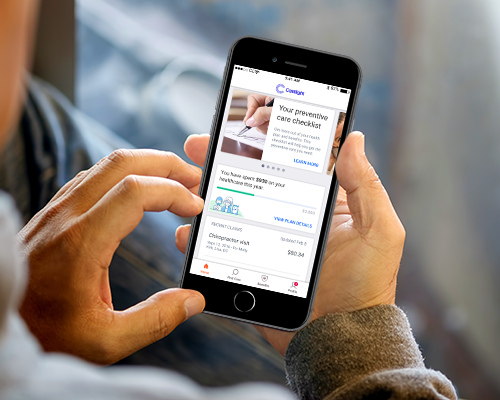Open Enrollment is full of choices – one faced by many is how to best maximize tax savings that accompany some health benefits. Choosing to contribute to a Flexible Spending Account (FSA) or a Health Savings Account (HSA) can be confusing. How do you decide between the two? Is one better than the other? Below, we take an in-depth look at FSAs and HSAs – what’s different, what’s the same? (Feel free to skip to the Conclusion for a quick overview of both.)
Flexible Spending Account
With a Flexible Spending Account (FSA), you can use pre-tax dollars to pay for certain allowed expenses. Pre-tax means that you do not pay federal, state or employment taxes on contributions you make to an FSA. Depending on your tax bracket, you may save as much as $40 for every $100 you contribute to an FSA.
There are two different plans:
- The Health Care FSA (HCFSA) is used for eligible out-of-pocket health care costs, such as deductibles, copays and coinsurance. The annual maximum for the HCFSA is $2,600 in 2018, as per IRS regulations.
- The Dependent Day Care FSA (DCFSA) is used for eligible dependent care expenses while you work, including day care, after-school programs and home care. The annual maximum for the DCFSA is $5,000 in 2018, as per IRS regulations.
You can choose to contribute to one or both of these FSA options. You cannot use HCFSA dollars to pay for dependent day care expenses, and vice versa (each of these accounts is independent of the other).
How the plans work:
- You decide how much you want to contribute to one or both FSAs for the calendar year.
- Your contributions are then taken out of your pay in equal amounts each pay period before taxes are deducted.
- You and your tax-qualified dependents incur eligible expenses.
- You use your FSA Debit Card to pay for health care and/or dependent day care expenses at participating locations, or file a claim online, via fax or mail for reimbursement. Note: If you use your debit card, be sure to keep your itemized receipts in case you are asked to provide supporting documentation.
- Your reimbursements are paid to you tax-free.
FSAs are “use it or lose it,” meaning that you forfeit any unused balance at the end of the plan year. However, with the HCFSA, you have a “grace period” of 2 ½ extra months (January 1 – March 15 of the following year) to use the money in your account; the DCFSA follows the calendar year and does not have a grace period. Your FSA elections do not carry over from year to year, and you must re-enroll each year to participate. You do not need to have medical coverage through GW to elect the FSA. You can only change how much you wish to contribute to the FSA during Open Enrollment or if you experience a Qualified Live Event (QLE), such as a change in marital status, birth or adoption of a child, change in spouse’s work status or coverage, etc.
Health Savings Account
Like the HCFSA, the HSA allows you to contribute pre-tax dollars to pay for health care expenses, such as deductibles, copays and coinsurance. However, you are only eligible to participate in a Health Savings Account (HSA) if you are covered by a high deductible health plan, like the GW Health Savings Plan (HSP).
The IRS imposes annual limits to HSA contributions. The annual HSA contribution limits for 2018 are:
- Individual HSP coverage – $3,450
- Family HSP coverage – $6,900
The HSA has an additional perk: the GW HSA Matching Contribution: GW matches up to $600 for individuals who contribute at least $600, and up to $1,200 for those covering dependents who contribute at least $1,200. And while your contribution is deducted from your paychecks in equal installments throughout the year, the GW matching contribution is made up-front with your first paycheck of the year. (Your contribution + GW’s contribution cannot exceed the annual IRS limits.)
In order to be eligible to enroll in an HSA, you must meet the following criteria:
- Must be covered by a qualified high deductible health plan (in this case, the GW HSP)
- Cannot be enrolled in Medicare or TRICARE
- Cannot be claimed as a dependent on someone else’s tax return
- Cannot be covered by another health plan that is not HSA-qualified (with some exceptions, including vision coverage, dental coverage, accident and disability coverage and employee assistance programs)
HSA participants cannot participate in the HCFSA. However, if you do enroll in the GW HSP but are not eligible for the HSA (due to a reason listed above), you have the opportunity to participate in the HCFSA.
Contributions to your HSA roll over from year to year, and accumulate if not used (a major difference from the FSAs, which are “use it or lose it” and require you to re-enroll each year). You may also change how much you wish to contribute to your HSA at any point during the year.
Conclusion
While the HCFSA and HSA allow employees to set aside pre-tax dollars for qualified health care expenses, only the DCFSA allows employees to use pre-tax dollars for eligible dependent day care expenses. The HSA benefits from an employer match, but the employee must meet certain criteria in order to be eligible to enroll in an HSA (such as be covered under the GW HSP, not be enrolled in Medicare, etc.); FSAs do not have these types of requirements (you do not need to be covered under a GW health plan in order to elect the FSA). Annual contribution limits also differ between FSAs and HSAs, and while HSA contributions can roll over from year to year and accumulate, FSAs are “use it or lose it” and require re-enrollment each year. Finally, while HSA contribution amounts can be changed at any point throughout the year, FSA contribution amounts can only be changed during Open Enrollment or after experiencing a QLE.
In short, whether you choose to elect an FSA or HSA is dependent on which option suits your individual or family circumstances and coverage. Certainly, both options are investment tools that help you save for your future. The choice is yours.














